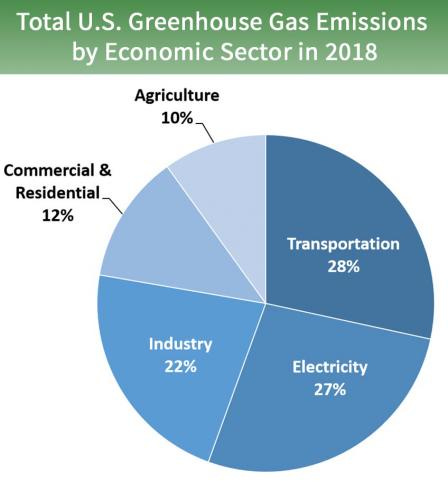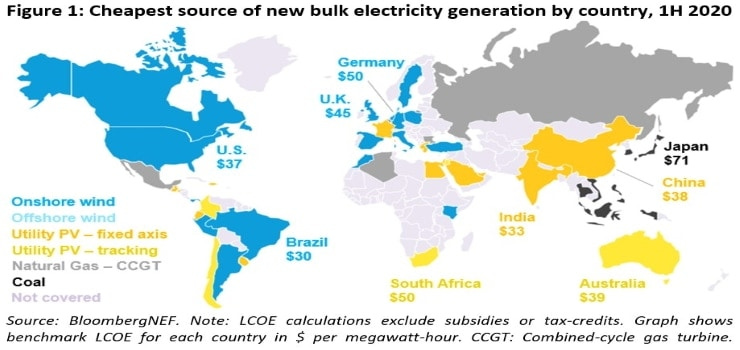Climate change isn't THAT hard
Relax, it's just the end of the world
Matt Yglesias recently wrote a post in which he explains why he doesn’t devote much attention to climate change policy. Basically, he says, it’s too tough of a nut to crack. He writes:
I don’t know exactly what we should do about climate change…[it’s] an extremely hard board to bore for some reasons that are pretty fundamentally baked into the structure of the issue…
Even under optimistic assumptions, abandoning the energy infrastructure you already have in favor of some new infrastructure involves present-day costs for the purpose of achieving future gains.
Because climate pollution operates on a global scale, each country will receive less than 100 percent of the future gains that it makes sacrifices for.
Now these points aren’t wrong. Halting climate change will involve some big investments. And there’s a coordination problem between countries; nobody wants to bear the burden of decarbonization while others free-ride.
But there’s another powerful force on our side in this fight, which will act against both of these problems. It’s a force whose power we consistently underestimate and deride, and yet which has come through for us again and again in our times of need. That force is technology.
A brief word in defense of technological solutions
Before going on, I’d like to comment about how our culture perceives technology and technological solutions. In the last decade, we’ve basically been taught to deride “solutionism” — while Silicon Valley techbros were bending their genius toward figuring out ways to sell more ads or lower taxi drivers’ wages, inequality was running rampant and parents were struggling to feed their kids. Instead of trusting wizardry to solve the world’s problems, we were supposed to place our faith in politics, in mass action, and in cultural change.
So it’s small wonder that when COVID hit, I got tweets like the following:
Except then consider what happened with COVID. Our leaders failed to fight the virus effectively, and the President actively sabotaged containment efforts. Culturally, we screeched our heads off about masks and herd immunity and “just the flu” and beach parties and school closings and bar closings and restaurant closings and dorm closings and so on and so forth. We didn’t implement strict lockdowns and we protested against lockdowns and we didn’t even obey the half-assed lockdowns we did implement. We became one of the planet’s worst-hit countries, despite having the planet’s most expensive health care system. We died in the red states, we died in the blue states. We died in droves, in hundreds of thousands. Collectively, as a society, we wrung our hands and ran in circles and screeched and died and screeched and died and screeched and died until scientists made vaccines against the virus.
So I guess what I’m saying is, sometimes technological solutionism has its merits. Even if you aren’t ready to embrace that idea, this COVID episode should at least make you question the 2010s consensus that technology is a sideshow compared to social movements.
Technology and climate change
Greenhouse emissions are produced a number of ways. In the U.S., more than half comes from electricity generation and transportation:
Electricity can be decarbonized by replacing coal and gas plants with solar and wind. Ten years ago, the thought of doing this at a large scale seemed laughable to many; solar and wind were just too expensive. But then it turned out that as we built more solar and more wind, they got cheaper and cheaper — a phenomenon known as a learning curve.
Because we started deploying solar at a large scale, the price went down. That made it easier to deploy at a large scale, so we deployed more, so the price went down more, and so on. The upshot is that in a single decade, solar has gone from a pipe dream to an incredibly cheap source of energy.
As a result, either solar or wind is now the cheapest energy source over much of the planet:
Solar and wind, of course, are intermittent. You need to overbuild, so that you have enough power in the winter or on cloudy days. That increases the actual cost of switching to solar, but the costs are so low and still dropping so fast that this just isn’t really an issue. You also need batteries in order to store solar energy during the day to power things at night. But batteries themselves are following a learning curve as we build more and more. Ramez Naam — the ultimate climate technology blogger, who foresaw the renewables revolution before almost anyone else — showed this graph back in 2015:
Since then, battery costs have fallen far faster than Ramez predicted. And interestingly, other forms of energy storage are also getting rapidly cheaper, following their own learning curves.
Of course, this addresses most of the other biggest source of greenhouse emissions — transportation. Electric cars now have a range of 400 miles (my old Honda Civic got about 350). Companies are building electric trucks as well. The same basic technology that allows buildings to store solar and wind energy overnight allows much of transportation to go emissions-free.
All the other stuff
Now let’s go back to that chart of where greenhouse emissions come from:
Decarbonizing electricity and most of transportation will only get us about halfway to zero. But many of the other things can be solved with electricity. Commercial and residential buildings can replace gas heating and cooking with various electric-powered technologies (heat pumps, electric furnaces, induction stoves, and so on). Industrial processes can often substitute hydrogen — made from water using electricity — for fossil fuels, or sometimes even use electricity directly.
Thus, the green electricity revolution will allow much deeper decarbonization than the pie chart suggests. That won’t take care of everything — there’s still agriculture to consider, as well as airplanes, ships, cement manufacturing, and a couple of other “last mile” type of things. But it’ll allow us to make huge, huge headway against greenhouse emissions.
Technology shrinks the sacrifice of stopping climate change
As Matt points out, switching our economy to zero-carbon electricity, transportation, industry and buildings will require paying up-front costs. Massive numbers of solar and wind plants will have to be built, as will a nationwide network of electric vehicle charging stations. The entire auto and truck fleets will have to be replaced. Buildings will have to be retrofitted, industrial plants retooled.
But lots of those costs just replace costs we were going to pay anyway. We were always going to replace the auto fleet, because cars wear out in about 12 years. We were always going to replace old fossil fuel plants and gas stations; now we just do it faster. The cheaper these technologies get, the less the up-front cost of reducing climate change.
In fact, sometimes the technological progress is so fast it reduces the total costs that society has to pay. For example, solar has gotten so cheap that in some places it’s actually cheaper to build new solar plants than to keep existing coal plants running!
Of course, this doesn’t apply to ALL the costs. Absent the need to decarbonize, we probably wouldn’t have retrofitted all those buildings and industrial plants. So that’ll be some extra cost.
But thanks to technology, the total up-front cost of decarbonization will be a lot less than it would otherwise have been. We’re not going to be living off of brown rice and tap water for a decade while we build the green future. In fact, we’re going to be just about as wealthy and comfortable as we are now, except more of us will have jobs.
Technology reduces the coordination problem
Our World in Data has an excellent new page about renewable energy, which contains this very helpful chart:
This virtuous cycle applies across nations just as much as within a nation. Now that solar and wind and batteries are getting so cheap, nations don’t have to have a huge amount of political will to start deploying them. In fact, this is already happening. India, which understandably has little desire to help rich nations clean up the climate mess they made, is now exceeding its own targets for renewable energy, simply because the technology has become so cheap. It will stop building new coal plants in 2022. When Africa industrializes, it will do so with cheap renewables. Even China, the world’s leading carbon emitter and a country not inclined to make sacrifices for anyone else’s benefit, may now be getting serious about transitioning to renewables.
A coordination problem, you see, is a negative externality. But technology creates a positive externality, because ideas flow across borders. And that positive externality helps counteract the negative one.
So we just sit here and wait for technology to save us??
NO! This is not what we do!
You might think I’m saying that technology will save us, and we don’t have to worry about climate change anymore. But that is absolutely not what I’m saying.
What I’m saying is that technology has pushed down the social costs of decarbonization from “ha ha ha, this is something only crazy eco-socialists would ever think we would possibly do” to “huh, this is actually pretty doable”.
Technological progress is amazing, but every year counts, and we have to speed things up. That means forcing fossil fuel plants to close earlier than they would have. It means incentivizing people to trade in their gasoline cars for electrics earlier than they would have. It means offering incentives to build electric charging stations. And so on. Basically, technology is a big wheel rolling down the hill, but we have to run after it and push it so it rolls faster.
And of course there are those things that probably won’t get done without political action — retrofitting buildings and factories. We need to do those too.
On top of that, there are a lot of ways government action can facilitate the rapid development of new climate change-fighting technologies. Research shows that before around 2001, it was government research spending, not private sector scaling, that was the driving factor behind the solar cost drop. On Twitter, I recently asked which technological breakthroughs would be most helpful in advancing the fight against carbon emissions, and got hundreds of (mostly helpful) replies. Take a look at the list.
Finally, there are a lot of ways we can help and incentivize the rest of the world to decarbonize as well. Simply scaling up solar and batteries very quickly pushes down costs — remember that learning curve? — which makes green energy cheaper for developing nations like India. But we can also license these technologies for free or at reduced prices. We can pay other countries to switch away from coal and oil. If we pass a carbon tax, we can also include a carbon tariff. And of course we can reclaim international leadership on the climate issue.
In other words, there is a lot of political stuff we can do to speed up decarbonization, and thanks to technological progress, that political stuff is in the realm of the possible rather than the realm of the ridiculous. Of course, it goes without saying that this requires good leadership; with Trump-type idiot villains in power, technology really is our only hope, as it ended up being with COVID vaccines.
So…elect good leaders.
And even if we do elect good leaders, it doesn’t mean we can breathe easy. Even our mightiest efforts will almost certainly not be able to hold global warming to safe levels. Already, extreme and unanticipated negative effects of climate change are beginning to strike. It’s going to be a difficult century.
But let’s not give up in despair and turn our attention to other things. Technology has given us a shot against the most extreme climate change scenarios. I think there’s a reasonable probability that we will choose to take that shot.











can you write about the effects of technological change on the economy (past technologies and future technologies)and how public policy can be used to make sure these changes benefit everybody?
I commented about this on Matt's blog, but basically Noah is right. Small modular technologies ftw. In addition, there is a lot of stuff coming down the innovation pipe that will address many of the hard-to-abate sectors. Not all of this is high science (thought some is). A lot of it is just business model innovations that enable a producer to get a premium for a carbon neutral product.